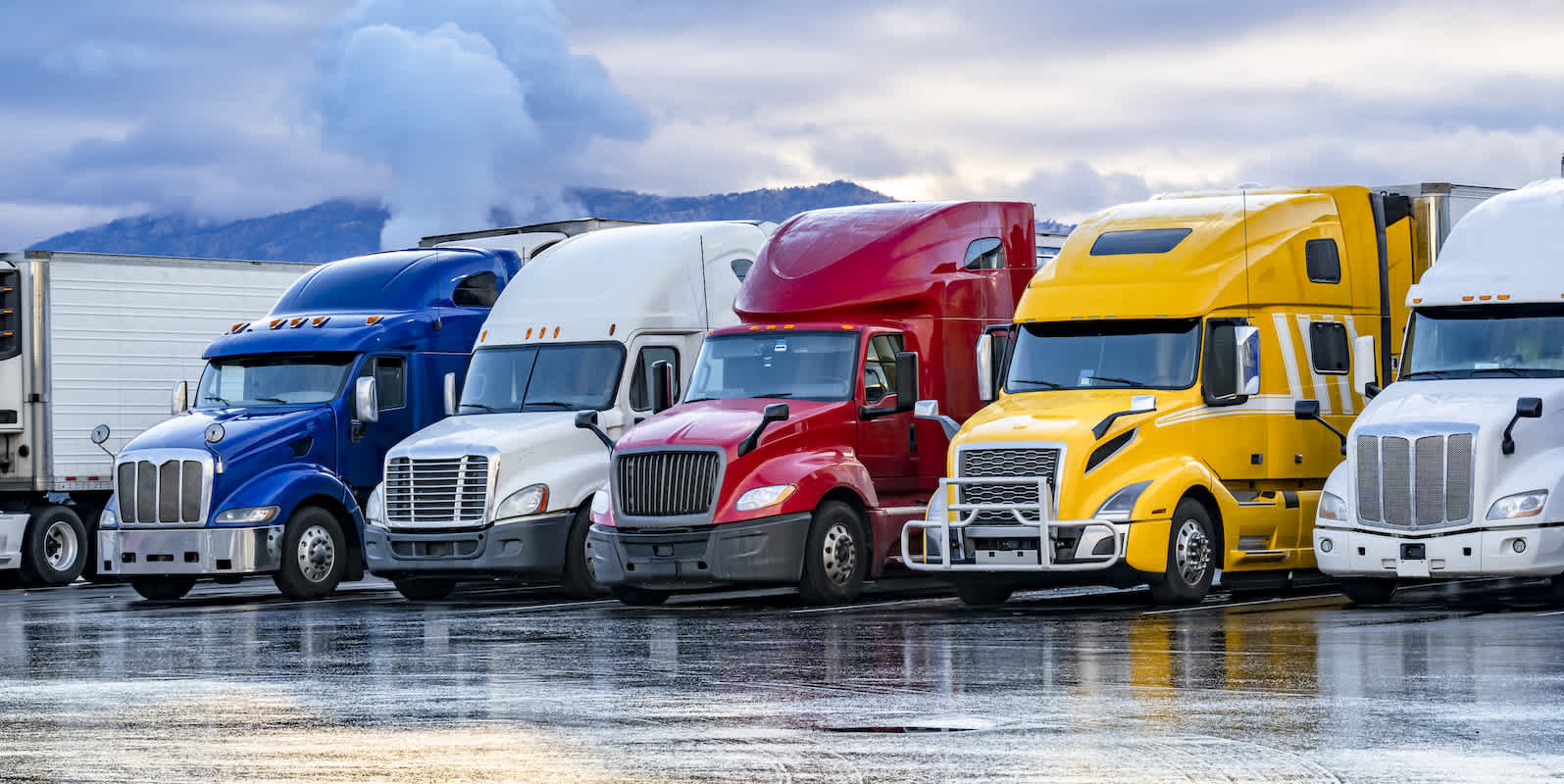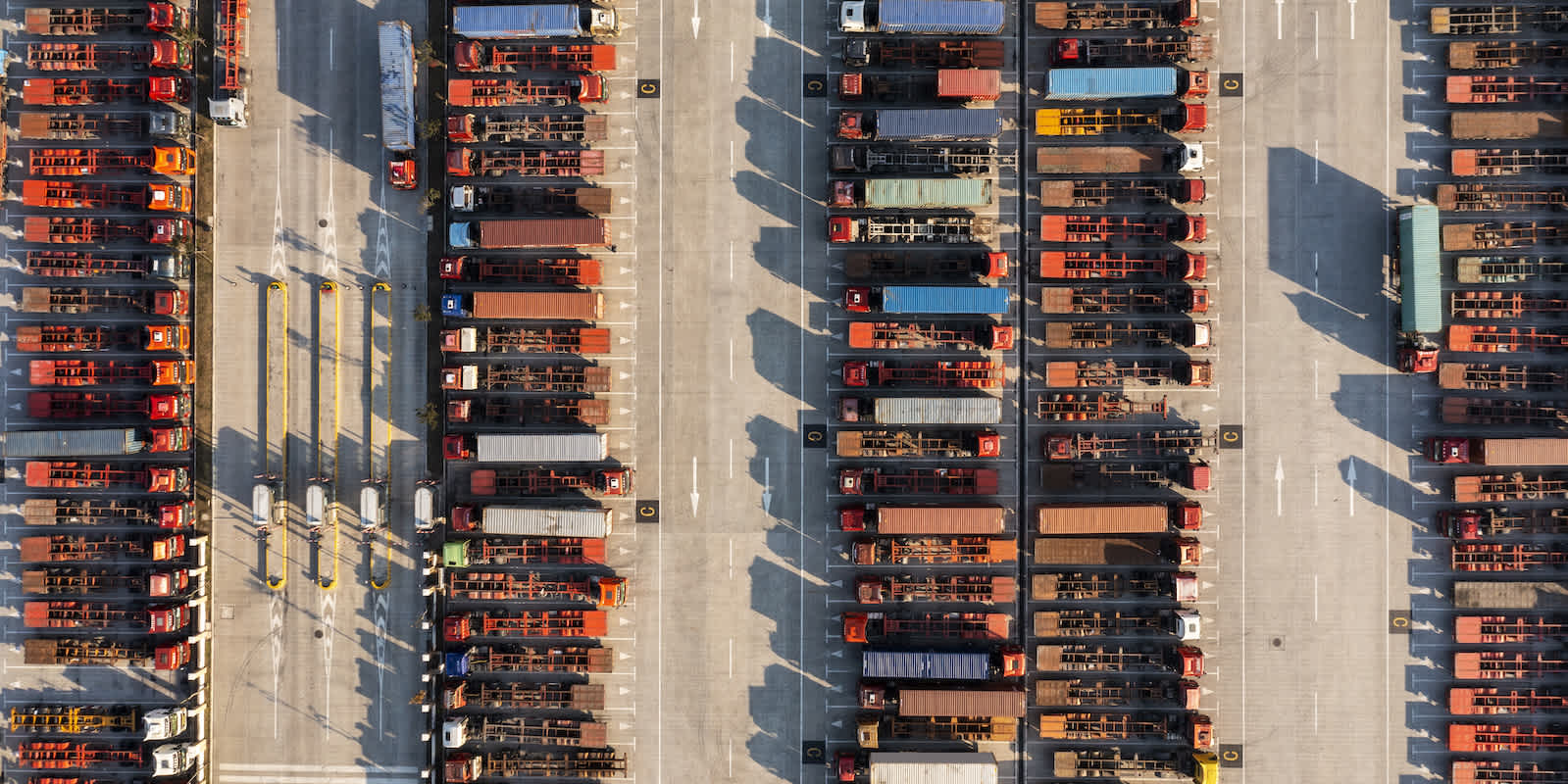
August 3, 2023
Reshaping the Freight & Supply Chain Industry: Key Takeaways, Future Mitigation and Sustainability ft. Bill Driegert, EVP Head of Trucking
Reshaping the Freight & Supply Chain Industry: Key Takeaways, Future Mitigation and Sustainability ft. Bill Driegert, EVP Head of Trucking
This article originally appeared on LinkedIn, republished here with the permission of Daversa Partners and the author

In the ever-evolving logistics industry, the name Bill Driegert, Head of Trucking at Flexport, rings a particularly resonant bell. Boasting an impressive track record that includes the co-founding of Uber Freight division in 2016, he has indisputably been a transformative force in this sector. As we delve into his insights on Flexport's transformative impact on the broader logistics landscape, the ongoing supply chain crisis, and the remarkable demonstrations of emerging technology applications, we also cast an eager eye towards the future. Join us as Driegert shares his predictions for the trucking landscape fifty years down the line, offering a unique perspective shaped by his extensive experience and innovative mindset.
Following Flexport's acquisition of Shopify Logistics in June 2023, how has this development influenced your role?
After the acquisition, we merged the two teams, with the new team focused on developing freight capabilities. This has served as a clear accelerator to our goals and a great merger of motivations, cultures, and capabilities. Flexport has given me an opportunity to build upon existing ideas that have become common in the market, but now on a global scale across a broader set of services, within a company that has created a unique advantage in simplifying global freight. The existing business volume and scope gives us significant acceleration with customers, and the current slower market also allows us to be more patient, targeted, and thoughtful with how we scale and go to market. I have really been enjoying this opportunity to both build on current capabilities while treating it like a greenfield build.
Dave's memo about your appointment at Flexport mentioned the company's ambition to construct a "conveyor from the East to the West." Could you provide some insight into this vision and how it fuels your enthusiasm about Flexport's potential transformative effect on the broader logistics landscape?
As a global supply chain leader, Flexport is always striving to streamline the transportation of goods between any two countries—be it China to the US, the US to China, Italy to Mexico, or any route in between. The metaphor of a "conveyor" signifies a vision of continuous, efficient movement. Our aim is to remove any friction from the incredibly complex process of global freight movements, with trucking being just one crucial component.
Flexport's mission is to make global trade easy for everyone. Part of what makes me so excited about our mission is that I believe no other company has the scale, ambition, talent, and culture that Flexport possesses to go after a mission this hard. By enhancing freight efficiency, we have the ability to help anyone and everyone that makes or buys physical goods anywhere. This has the potential to improve quality of life globally—what could be more noble? By simplifying operations for carriers and providers, we're making life easier for shippers and merchants, which ultimately leads to more accessible and affordable goods worldwide.
Considering the supply chain crisis we've experienced over recent years, exacerbated by uncontrollable factors like COVID-19 and subsequent lockdowns, what have been some key takeaways that have reshaped the freight and supply chain industry? Moreover, do you believe we've moved past these issues, and how is Flexport planning to mitigate such problems in the future?
The pandemic exposed process gaps in many shippers' operations, leading to massive network disruptions coupled with stimulus-driven surge in consumption. The severe capacity shortfalls that ensued allowed carriers to control pricing from mid-2020 to early 2022. However, between 2022 and 2023, shippers regained control and made permanent improvements to their freight management methods.
Three significant shifts accelerated during this period: the adoption of real-time pricing and execution for shippers, reduction in contracting cycle times, and an increase in rejection rates (30-40%) by carriers due to the time lag between pricing and actual execution. This led to an overflow of freight to the spot market, forcing shippers to scramble for capacity. As labor costs and inefficiencies escalated, the pandemic highlighted the need for real-time capabilities, resulting in a surge in adoption. Contracting cycle times also shortened dramatically for many shippers, from 18 months to just 3 months, leading to a more responsive procurement process that I believe will only continue to accelerate.
While these issues may seem to have passed, the core challenges in freight—its cyclical, unpredictable nature requiring highly responsive and reactive capabilities—persist. However, Flexport is poised to advance the shift towards touchless pricing, contracting, and execution across all modes and regions, with technology continuing to reduce the cycle time on core processes.
Today's freight industry challenges largely stem from external factors like global economic instability, monetary policy fluctuations, and geopolitical uncertainties. We can't resolve these issues directly, but we can prepare by improving our information and intelligence, enhancing responsiveness and resiliency, and ensuring that we all run our businesses mindfully, especially in the absence of Zero Interest-Rate Policy (ZIRP). There is still an excess of capacity in the market, leading many logistics companies to focus on survival. With options at hand, shippers are strategically streamlining their capacity base and focusing on their best providers. It's a challenging time for carriers across the board, making adaptability and resilience key to navigating the current landscape.
Given your history of building in this space, I want to take a look back at your experience at Uber before we delve into the future. What were you seeing in the market and industry at that time and what kind of impact did you have on the trucking industry?
In 2016, it was incredibly difficult to survive as a small carrier. Many struggled to stay afloat amidst limited opportunities, predatory practices by intermediaries such as freight brokerages, and an overall poor quality of life. The most acute issue that I saw was the owner-operators and small carriers' experience, which was our focus for year one. We knew that by enhancing their experience, we could empower a new capacity base for shippers.
At Uber, we pioneered a new approach in the market, enabling a single-truck business owner or operator to download an app, view a freight movement at a fixed price, and book it. This may seem straightforward now, but at the time, there were no providers offering upfront fixed pricing and one-touch booking. As an analogy, I like to say that the best experience in trucking a carrier could hope for then was akin to a Craigslist listing—an online classified ad system where outcomes were uncertain, prices had to be negotiated over the phone, final costs weren’t clear upfront, and the booking process involved a tedious exchange of documents via fax and email. It was a painful process, to say the least.
We revolutionized this by simplifying access to freight that was previously inaccessible. I foresee this trend continuing to expand, and I see such a massive opportunity at Flexport to further ease access and opportunities for carriers worldwide, as this transformation ultimately benefits shippers through enhanced reliability and reduced costs. Carriers equipped with technology are not only more reliable but also more efficient, leading to a stable and sustainable future for the industry.
Now looking ahead, as we navigate the fast-paced evolution of the freight industry, I'd love to hear your predictions for the trucking landscape 50 years down the line. Could you also spotlight which markets are emerging as growth powerhouses and how freight companies are rising to the challenge of sustainability?
I envision that the majority of truckload moves will be conducted by Autonomous EVs, with alternate fuel drivelines and driver-pilot support for long-haul cross-country moves. I would also expect a significant footprint of lights-out manufacturing facilities (with zero personnel) coupled with full AV regional shuttles to become commonplace. The winners in this landscape will be those who can integrate all these elements effectively within their operating system in addition to having the personnel with the sophistication to integrate all the various components together.
In terms of emerging markets within the freight industry, this is probably not the year to ask that question! I’m not sure anyone is seeing significant growth, but the best companies with tech-driven brokers and top-tier intermediaries continue to consolidate share. This steady progression has seen the largest tech-forward intermediaries enhance their efficiency and lower costs, creating larger advantages and barriers to entry. Simultaneously, there's been a notable expansion of small carriers, now empowered with technology. The market is at an interesting inflection point where all the new technology could result in consolidation, if in the hands of few, or fragmentation, if distributed amongst the many—leading to either consolidation or fragmentation. There are companies making bets on both ends, but I personally believe that technology will compress the connection between shippers and carriers and the companies that will see the greatest growth are those with the broadest reach and simplest connection between the two endpoints of shippers and carriers.
As for sustainability concerns, California has mandated that every new drayage truck going into port from 2024 on must be an EV. I’m excited to help shepherd the market to a more sustainable future, and I look forward to collaborating with our carriers and shippers to bring more low and zero emission options to market. The inherent benefit of being obsessed with simplifying freight is that greater network efficiency and truck utilization directly results in less waste across the supply chain. Couple that with lower emission capacity options, and we can make a real impact.
Related Content
![Inventory Removals Blog Hero]()
BLOG
Adjustments to Flexport’s Inventory Removal Services and Storage Fees During Peak Season 2023







